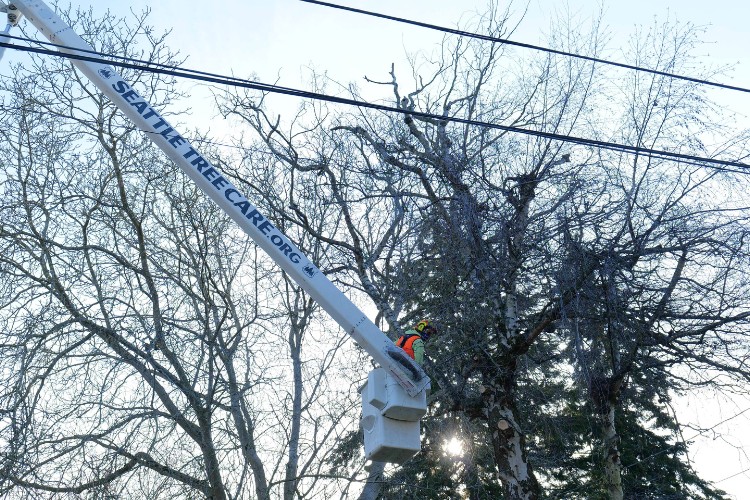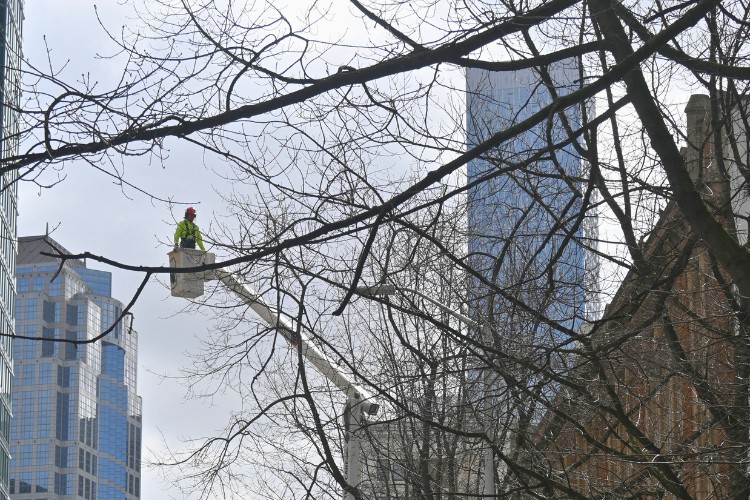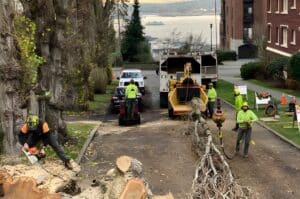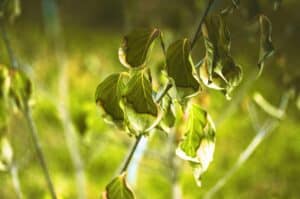6 Ways to Tell if Your Tree Needs Pruning in Seattle
Not sure when your tree needs pruning? From dead branches to overcrowded canopies, Seattle Tree Care breaks down all the signs it’s time to prune and why.
Think your trees are looking a little wild? You might be right.
Overgrown branches, crowded canopies, or thinning leaves could be your tree’s way of asking for a trim. Knowing the signs of when to prune can help you keep your landscape healthy, safe, and looking its best.
Here’s what Seattle homeowners should watch for – and how regular pruning keeps trees thriving year after year.
Key Takeaways:
- Promptly remove dead, diseased, or damaged branches to improve tree safety.
- Trees with branches encroaching on power lines or structures need professional pruning, as attempting to trim near power lines yourself can be extremely dangerous.
- Competing branches that rub against each other can damage the bark and create entry points for insects and diseases.
- Professional pruning can catch structural problems early, such as the development of a second trunk, and prevent them from creating a structural weakness in your tree.
- Seattle has strict regulations on tree pruning, with permits potentially required for both street trees and trees on private property.
6 Things to Look for to Determine if Your Trees Need Pruning
Pruning isn’t just about shaping branches – it’s about solving problems. Whether your tree poses a safety risk, is showing signs of stress, or just needs a little help growing strong, pruning should always have a clear purpose. Start by looking for these common signs that your trees may be due for some expert care.
1. Dead, Dying, or Diseased Branches
Tree branches can end up damaged or killed through storms, insect attacks, disease infections, or human-caused injuries. While these injuries are not likely to kill a tree outright, the branches will not recover. Pruning is the only option to increase safety around the tree and allow it to grow a new shoot to aid in photosynthesis.
Determining what is dead and what is dormant can be difficult, especially if you inspect your trees in the winter or early spring. Some aspects you can look for include:
- Lack of leaves or buds during the growing season
- Discolored bark
- Brittle branches that easily snap
- Fungi growing on the branches
Removing diseased branches is especially important, as these branches may help spread the problem to nearby trees if left standing.

2. Branches Encroaching on Power Lines and Structures
In nature, trees have fewer problems living harmoniously with the things around them. However, when you grow them in a yard, they have a much more difficult time with it. Trees can end up interfering with power lines or structures as they grow. Even if you plant a tree in the proper spot, it may still grow larger than expected and begin encroaching on structures.
Pruning the offending branches will prevent them from damaging your home or getting tangled in electrical wires. Trees in power lines can be especially dangerous, as there have been many sad stories in the news of people working on these trees and getting electrocuted.
Leave the pruning of these trees to professionals who have line clearance training to prevent injury or even death.
3. Overgrown Trees with Competing Branches
Branches are like us; sometimes, they like to compete with each other. While there’s nothing wrong with a little friendly competition between people, branches competing for space is never ideal and can lead to them damaging each other.
When two branches try to occupy the same space, they rub against each other. This rubbing can remove the bark and open the branch up to attacks from insects or diseases. Heading into the growing season, when pests become active, it can harm your tree’s long-term health.
Look for any branches that seem to be constantly bumping into each other when the wind blows, and have an arborist remove one of them as soon as possible. Having one branch that is alone and thriving is better than two that are potential insect targets.
4. Abnormal Growth Patterns
Trees, especially young ones, can develop poor growth patterns that pruning can correct. The most common is when a tree grows a second trunk (which we typically call co-dominant stems). A tree with two trunks has a point of weakness that could easily break during a storm. Pruning a young tree can correct these problems early and prevent them from developing.
Aside from multiple trunks, some other typical abnormal growth includes:
- Branches that aren’t growing the right way
- A leaning tree
- Growth that is mostly on one side of the tree
Identifying some abnormal growth patterns is tricky for a homeowner who may not know what to look for. Have an arborist inspect your trees every two to three years to identify any potential hazards early and prune them.
5. Ornamentals Lacking in Aesthetics
Ornamental trees are popular in Seattle as they add extra color to your yard and don’t take up a lot of space. If you look at them in the spring and they aren’t as beautiful as you’d hoped, it could be a sign that some pruning is in order.
Trimming ornamental trees, especially right after they bloom for the season, will keep them from looking unkempt and encourage better flowering next season.

6. Dense Tree Canopies
Once the tree is fully leafed out in late spring or early summer, take a look up at it when the sun is shining and see how much sunlight is getting through. If the tree’s canopy is too dense, it won’t allow much sunlight to pass. You also may be unable to identify individual branches, as they will all blend together.
While a tree with a full canopy of leaves is ideal, when it is too dense, it is a sign that you need to prune it. Some of the dangers of overly dense canopies include:
- Prohibiting light from reaching low-hanging fruit, leading to worse fruit production
- Creating humid areas where mold can develop on your tree
- Blocking sunlight from reaching other plants below the tree
Frequently Asked Questions About Tree Pruning in Seattle
Regular tree trimming is one of the most important things you can do for your trees. We’ve compiled some common questions homeowners have about the service to arm you with more knowledge about how and when to prune.
Are there any regulations on pruning trees in Seattle?
Yes, Seattle has strict laws about pruning street trees and private trees. Before trimming, ask an arborist if you’ll need a permit for the work.
When should I perform pruning in the Seattle area?
The best time to prune most trees in Seattle is in the winter when the trees are dormant. Dormant trimming causes the least amount of stress on trees and protects them from attacks from insects and diseases. Spring is also a prime time for tree pruning, especially for ornamental trees.
How much can I trim at one time?
In general, we recommend keeping pruning light rather than removing many branches at once. Aim to remove less than 20 percent of the tree’s canopy at a time, with an upper limit of 30 percent. If you are worried about taking too many branches off at a time, have an arborist handle the job.

Trust Seattle Tree Care to Trim Your Trees the Right Way
Trees may not come with warning lights, but they do give clues when it’s time for a trim. When you spot the signs, it’s best to call in the pros. At Seattle Tree Care, our team includes ISA Certified Arborists who bring expert knowledge and precision to every pruning job.
We follow all ISA best practices and ANSI A300 standards, as well as Seattle’s municipal tree codes – so you can trust that your trees are in skilled, compliant hands.
Ready to give your trees the care they deserve? Call us today at 206-789-0534 or request a quote online.
SEE MORE ARTICLES FROM OUR b(LOG)
We've got you covered with tips, resources, updates, how-to's, and other helpful information about trees and landscapes in Seattle, Puget Sound, and King County, WA. Join the thousands of smart local residents who get the monthly newsletter from Seattle Tree Care for helpful information you won't want to miss!
There's no spam - we promise! We are committed to keeping your e-mail address confidential. We do not sell, rent, or lease our contact data or lists to third parties.








